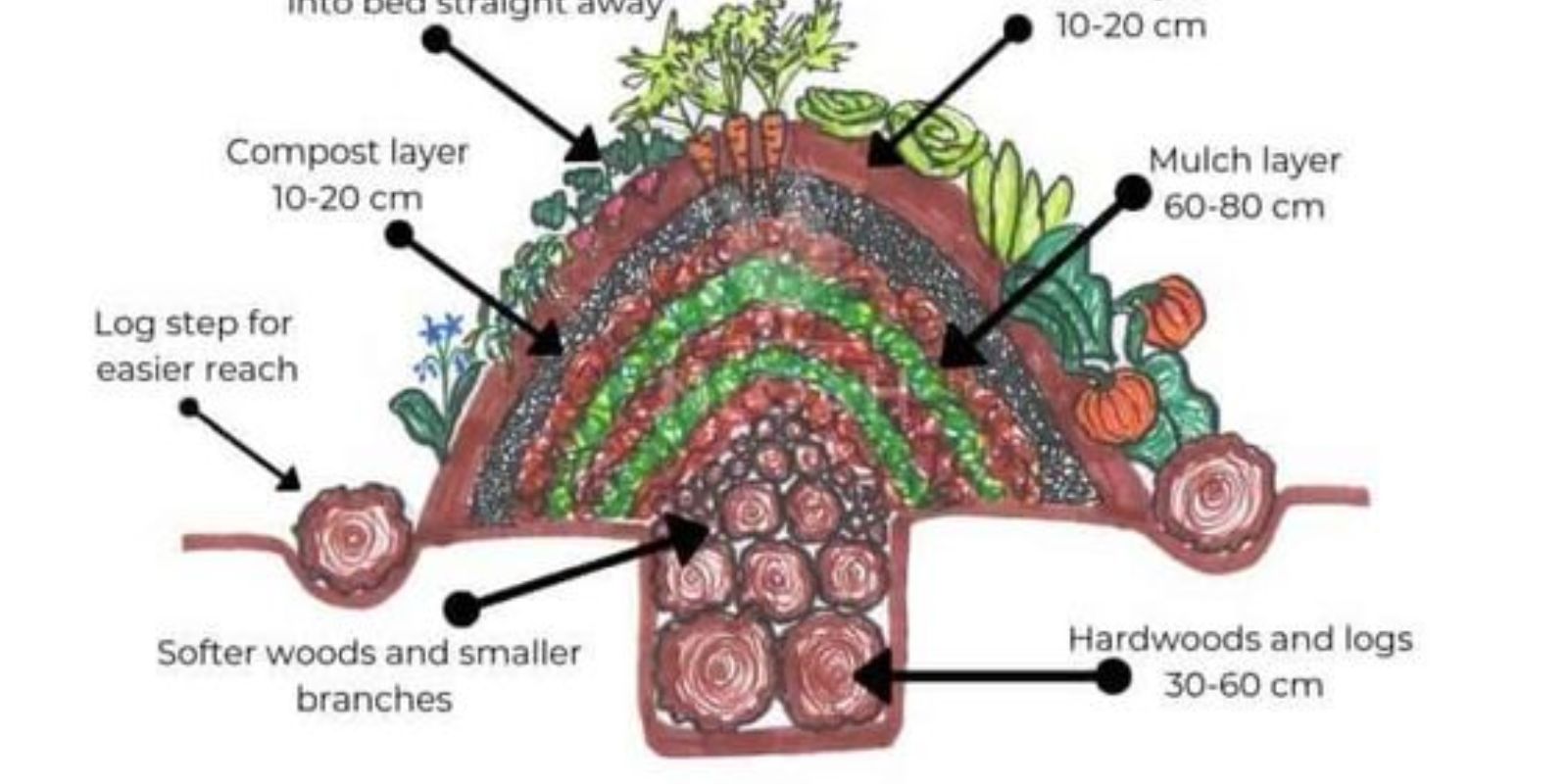Gardening enthusiasts and eco-conscious individuals alike are constantly seeking methods to improve soil health, conserve water, and minimize waste. One innovative technique that addresses all these needs is Hugelkultur. Originating from traditional German practices, Hugelkultur involves creating raised garden beds by layering organic materials in a specific manner. This approach not only improves soil fertility but also enhances water retention and supports healthy plant growth. In this article, we’ll delve into the steps of building Hugelkultur beds and explore why incorporating them into your garden can be a game-changer.
Introduction: The Magic of Hugelkultur
Hugelkultur, which translates to “hill culture” in German, is a method of creating garden beds that mimic natural forest conditions. The technique involves constructing beds from decomposing wood and organic matter, which gradually transforms into rich, fertile soil. This method offers numerous benefits, including improved soil structure, increased moisture retention, and reduced need for chemical fertilizers. Whether you’re an experienced gardener or a beginner, Hugelkultur beds can revolutionize your gardening practices and help you cultivate a thriving garden with minimal effort.
1. Select a Location
The first step in building Hugelkultur beds is choosing an appropriate location. Here’s what to consider:
- Sunlight: Select a spot with adequate sunlight, as most vegetables and plants thrive in full sun or partial shade.
- Water Access: Ensure the location has access to water or is close to a water source for easy irrigation.
- Drainage: Choose a location with good drainage to prevent waterlogging, although Hugelkultur beds naturally improve drainage over time.
2. Gather Materials
The success of your Hugelkultur bed relies on the quality and variety of organic materials used. Here’s what you’ll need:
- Large Logs and Branches: Start with large logs or branches as the base. These provide structure and a slow-release source of nutrients as they decompose.
- Smaller Twigs and Branches: Layer smaller twigs and branches on top of the larger logs. These materials break down faster, adding additional nutrients to the soil.
- Green Materials: Include green materials like grass clippings, vegetable scraps, and manure to provide nitrogen and enhance microbial activity.
- Compost or Soil: Use compost or high-quality soil to top off the bed, which will serve as the planting medium.
3. Prepare the Base
To build a Hugelkultur bed, start by laying down the largest logs or branches in the desired bed shape. Follow these guidelines:
- Shape and Size: Decide on the shape and size of your bed. Traditional Hugelkultur beds are often long and narrow, but you can adapt the shape to fit your garden space.
- Placement: Place the largest logs horizontally on the ground. They should be arranged closely together to provide a solid base for the rest of the materials.
4. Add Layers
Building the Hugelkultur bed involves creating multiple layers of organic matter:
- Layering: Add smaller branches, twigs, and green materials on top of the large logs. Alternate layers of different materials to promote better decomposition and nutrient availability.
- Composting: Spread a layer of compost or high-quality soil over the top of the organic matter. This layer will act as the growing medium for your plants.
- Compression: Gently compress the layers to help them settle and start the decomposition process.
5. Shape and Mulch
Once the layers are in place, shape the bed and apply mulch:
- Mounding: Form the bed into a mound or raised shape. The height of the mound will decrease over time as the materials decompose.
- Mulching: Cover the surface of the bed with mulch, such as straw or leaves. Mulch helps retain moisture, suppress weeds, and further enrich the soil.
6. Planting
You can start planting in your Hugelkultur bed once it has settled. Here’s how to proceed:
- Timing: Allow the bed to settle for a few weeks if possible, but you can also plant immediately if you’re eager to start.
- Plant Selection: Choose plants that are well-suited to your local climate and soil conditions. Hugelkultur beds work well for a variety of vegetables, herbs, and flowers.
- Planting Depth: Dig small holes or trenches in the compost layer for planting. The nutrient-rich soil will provide a strong start for your plants.
7. Maintenance
Maintaining your Hugelkultur bed is key to its long-term success:
- Adding Organic Matter: Regularly add organic materials to the bed, such as leaves, grass clippings, and compost. This replenishes nutrients and helps sustain soil fertility.
- Watering: Water the bed as needed, especially during dry periods. Hugelkultur beds retain moisture well, but they may still require supplemental watering.
- Weed Control: Monitor the bed for weeds and remove them promptly. The mulch layer helps suppress weed growth, but occasional weeding may be necessary.
Why You Need Hugelkultur Beds
Hugelkultur beds offer several compelling benefits that make them a valuable addition to your gardening toolkit:
- Soil Fertility: As the organic materials decompose, they release nutrients into the soil, improving its fertility and structure. This results in healthier plants and higher yields.
- Water Retention: The layers of organic matter in Hugelkultur beds act as a sponge, retaining moisture and reducing the need for frequent watering.
- Waste Reduction: By repurposing yard waste and other organic materials, Hugelkultur beds help reduce garden waste and promote sustainable gardening practices.
- Reduced Erosion: The raised bed structure helps prevent soil erosion and compaction, creating a stable environment for plant roots.
Conclusion
Building Hugelkultur beds is an excellent way to enhance your garden’s productivity and sustainability. By utilizing organic materials and mimicking natural processes, you can create fertile, water-retentive beds that support healthy plant growth and reduce environmental impact. Whether you’re looking to improve soil health, conserve water, or manage garden waste, Hugelkultur offers a practical and effective solution.
Have you tried building Hugelkultur beds in your garden? Share your experiences and tips in the comments below, and let’s embrace this innovative gardening technique together! 🌱🌟

